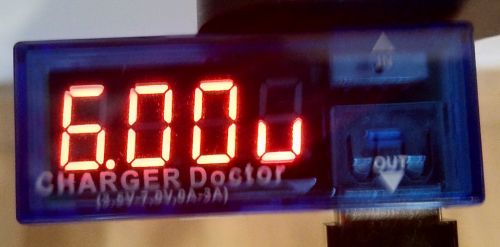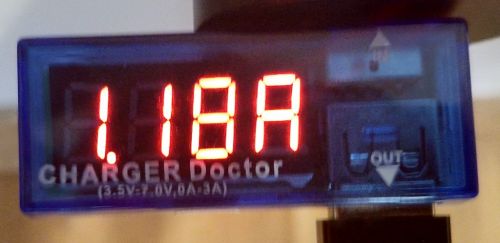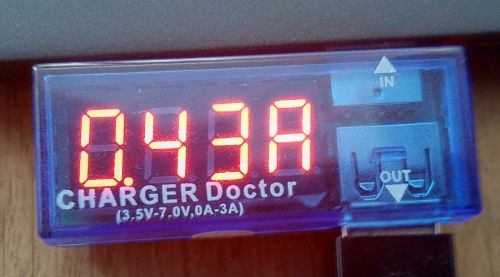Difference between revisions of "USB Charger Doctor"
Jump to navigation
Jump to search
m (fixed images) |
|||
| Line 1: | Line 1: | ||
== Summary == | == Summary == | ||
The USB Charger Doctor is and | The USB Charger Doctor is an voltage and current meter that measures in-line. It supports USB 1.x and 2.x and has no USB 3.x capabilities. Its a handy tool to test USB devices, check load levels and debug battery chargers and boost converters. | ||
== Requirements == | == Requirements == | ||
| Line 10: | Line 10: | ||
== Description == | == Description == | ||
The USB Charger Doctor is easily used by connecting it in-line between a power source and a chargeable device. When connected the display switches between voltage and current every 3 seconds. Following some pictures are provided to illustrate the difference in power delivery between a regular USB 2.0 port on a | The USB Charger Doctor is easily used by connecting it in-line between a power source and a chargeable device. When connected the display switches between voltage and current every 3 seconds. Following some pictures are provided to illustrate the difference in power delivery between a regular USB 2.0 port on a notebook and a mobile phone power adapter. The smartphone used was at ~90% charge. | ||
=== USB 2.0 Port on a notebook === | === USB 2.0 Port on a notebook === | ||
Revision as of 13:04, 6 July 2022
Summary
The USB Charger Doctor is an voltage and current meter that measures in-line. It supports USB 1.x and 2.x and has no USB 3.x capabilities. Its a handy tool to test USB devices, check load levels and debug battery chargers and boost converters.
Requirements
- USB type-A connectors to connect the Charger Doctor in-line
- No additional software required
Description
The USB Charger Doctor is easily used by connecting it in-line between a power source and a chargeable device. When connected the display switches between voltage and current every 3 seconds. Following some pictures are provided to illustrate the difference in power delivery between a regular USB 2.0 port on a notebook and a mobile phone power adapter. The smartphone used was at ~90% charge.
USB 2.0 Port on a notebook
Smartphone power adapter
Used Hardware
- USB Charger Doctor
- Windows 10 Notebook with USB 2.0 port
- Nokia 7 plus Android Smartphone
- Nokia AD-18WE Power Adapter



